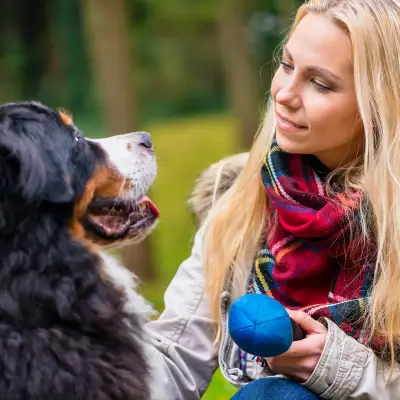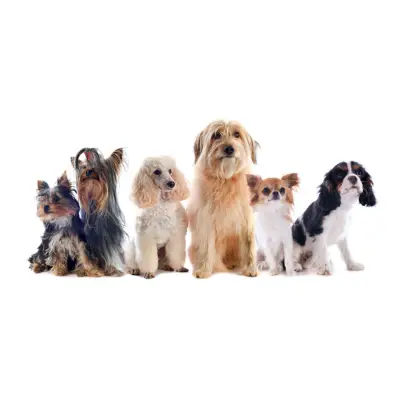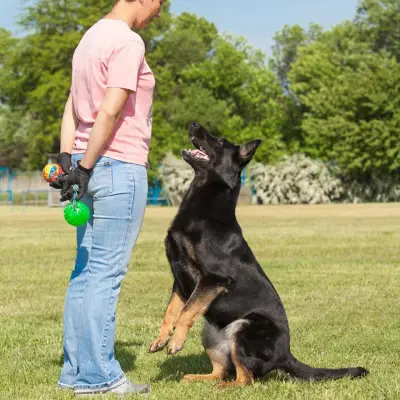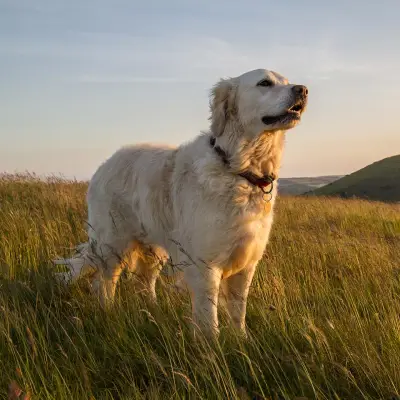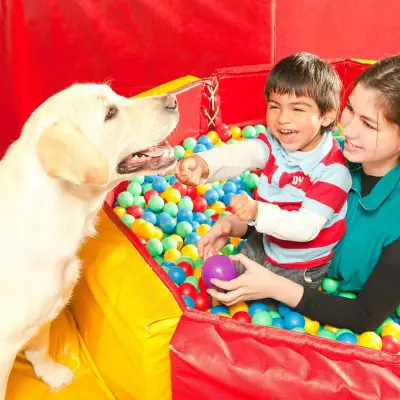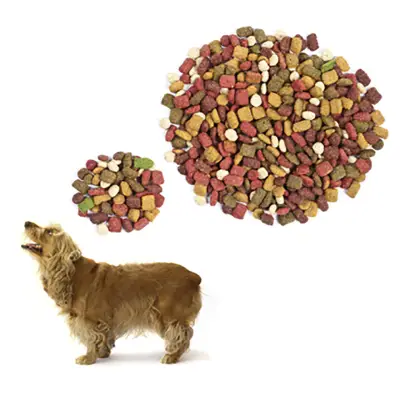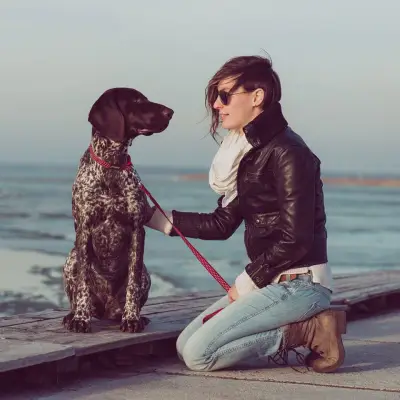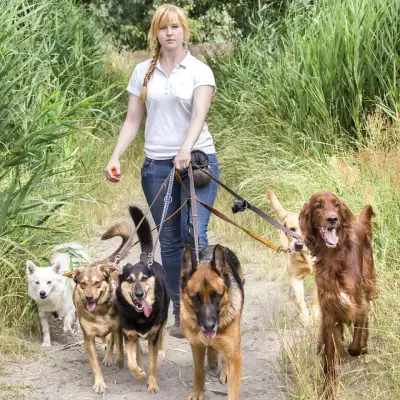As the summer sun climbs high and the heat rises, keeping our furry friends comfortable and safe becomes a top priority. Heatwaves can be tough on pets, with dogs, cats, and other animals all at risk from the soaring temperatures.
Here's a straightforward guide on how to keep your pets cool, ensuring they stay happy and healthy during those hot summer days. Remember, while enjoying the warmth is nice, our pets rely on us to help them through the scorching weather. So, let's dive into some simple yet effective strategies!
Jump to:
How Does Heat Affect Animals?
Heat is particularly challenging for pets. Unlike humans, dogs and cats don't sweat through their skin. They primarily cool down through panting and, to a lesser extent, through sweat glands in their paws. This makes them more susceptible to overheating and heatstroke. Knowing what temperature is too hot for pets and the signs of overheating is crucial for their well-being.
How do You Keep Pets Cool in a Heatwave?
To ensure pets stay cool during a heatwave, it's essential to provide them with constant access to fresh water and shaded areas, both indoors and out. Using fans and air conditioning within your home helps maintain a cooler environment, effectively reducing the risk of overheating. Rescheduling walks and outdoor playtimes to the early morning or late evening when temperatures are more bearable is also advisable.
1. Hydration is Key
Ensure your pets have constant access to fresh, clean water. Dehydration can happen quickly in hot weather, so keep their water bowls full and consider placing additional water stations around your home. For outdoor pets, shaded water bowls prevent the water from getting too warm.
2. Create Cool Zones
Set up cool, comfortable areas inside your home where your pet can escape the heat. Tiled floors in bathrooms or kitchens can provide a nice, cool spot for them to lie down. Consider investing in a cooling mat or bed specially designed for pets.
3. Limit Outdoor Activities
During heatwaves, keep outdoor activities to a minimum. Early morning or late evening walks are best when the temperature is cooler. Always check the pavement with your hand before heading out; if it's too hot for your hand, it's too hot for your pet's paws.
4. Keep Them Indoors
On particularly hot days, the safest option for pets is to stay indoors, where it's cooler and protected from the sun's direct rays.
5. Use Fans and Air Conditioning
Fans and air conditioning can be lifesavers during a heatwave. While not all pets like the direct breeze from a fan, many will appreciate the cooler air it circulates. If you're using air conditioning, ensure the room doesn't get too cold or drafty for your pet.
6. Groom them Regularly
Regular grooming helps prevent overheating. For dogs, a summer trim can make a big difference. However, never shave your dog completely, as their coat protects them from sunburn. For cats, regular brushing helps remove excess fur, which can trap heat.
7. Use Pet Sunscreen
Pets can get sunburned just like humans! Areas with less fur, like the tips of the ears and the nose, are particularly vulnerable. Sun cream for dogs and cats is available and should be used when your pets spend time outdoors. Just make sure it's specifically designed for pets.
8. Provide Cooling Treats
Ice cubes, frozen treats, or even chilled fruit (make sure it's safe for pets) can be a refreshing homemade snack. These treats can help keep your pet hydrated and cool.
9. Watch for Signs of Heatstroke
Know the signs of heatstroke, which can include heavy panting, drooling, lethargy, and, in severe cases, collapse. If you suspect your pet is suffering from heatstroke, move them to a cool area immediately and contact your vet.
10. Encourage Safe Swimming
If your dog enjoys water, allowing them to swim can be a great way to cool down. Just make sure the water is safe and that your dog knows how to get out of the pool or body of water.
11. Seek Shade
Ensure your garden or any outdoor space has plenty of shaded areas where your pet can rest away from direct sunlight. Trees, awnings, or pet-friendly structures can provide necessary shelter. If natural shade is scarce, create some with pet tents or umbrellas.
12. Keep Exercise Gentle
Adjust your pet's exercise routine during hot weather. Opt for gentle play sessions indoors where it's cooler, or if you're outside, ensure they can always access shade and water. For dogs, a paddling pool can be a fun way to combine playtime with a chance to cool down. Always supervise your pets around water to ensure they're safe.
13. Monitor Indoor Temperatures
Even indoors, temperatures can soar, especially in direct sunlight. Use blinds or curtains to shade rooms from the hottest sun, and consider a pet-safe fan or air conditioner to keep the air moving. If you're using a fan, ensure it's not directly pointing at your pet all the time, as this could cause dry eyes or discomfort.
14. Consider the Needs of Specific Breeds
Some pets are more prone to heat stress than others. Breeds with thick fur and short noses (like Bulldogs, Pugs, and Persian cats), elderly pets, and those with health conditions require extra care. Ensure these pets stay indoors during peak heat and consult your vet for specific advice tailored to your pet's needs.
Don’t Forget Wildlife
Why not put some cool, fresh water in your garden? Some wilting wildlife will doubtlessly love you for doing it. You can also create shelter by letting plants grow or keeping log piles, and provide food via feeders or well-watered flowers and berry-producing plants.
Signs of Heatstroke in Animals
Heatstroke is a serious condition that can affect all pets during hot weather. As responsible pet owners, it's important to know the warning signs. Quick identification and immediate action can save your pet's life. Here are the key signs of heatstroke in animals:
- Excessive Panting: Panting is a normal way for dogs and cats to cool down, but when it becomes heavy and relentless, it indicates that their body is struggling to regulate its temperature. This excessive panting is often the first sign that your pet is overheating.
- Drooling: While some pets naturally drool, an increase in drooling or saliva that appears thicker than usual can signal heatstroke. This excessive drooling is an effort to cool down through evaporation.
- Restlessness: An animal suffering from heatstroke may seem uncomfortable or unable to settle in one spot. They might pace, lie down, and then stand up repeatedly, trying to find a cooler spot or position.
- Lethargy or Weakness: Heatstroke can sap your pet's energy, leading to an unusual level of tiredness, weakness, or sluggishness. They might respond to commands slowly or seem uninterested in activities they usually enjoy.
- Increased Heart Rate: As the body works overtime to cool itself down, the heart rate increases. You might notice your pet's heartbeat is faster than normal, which is a response to heat stress.
- Vomiting or Diarrhoea: In some cases, pets may experience gastrointestinal distress, including vomiting or diarrhoea, which may also contain blood. This is a sign of severe heat distress affecting internal organs.
- Red or Pale Gums: Healthy gums should be pink, but heatstroke can cause them to turn bright red as blood vessels dilate in an attempt to release heat. Gums may appear pale or even purplish due to poor circulation if the pet is in shock.
- Confusion or Disorientation: Overheating can affect your pet's mental state, leading to confusion or disorientation. They may not recognise familiar places or respond to their name, indicating their body is struggling with the heat.
- Seizures: In extreme cases, the stress from overheating can trigger seizures. This is a critical sign that the brain and body are overheating to dangerous levels.
- Collapse or Loss of Consciousness: Advanced stages of heatstroke may result in your pet collapsing or losing consciousness. This is an emergency situation requiring immediate veterinary attention.
Frequently Asked Questions About Keeping Pets Cool
How can I keep my house cool for my pet?
Keeping your house cool for pets involves a few strategic measures. During the day, especially when the sun is at its peak, keep blinds or curtains closed to block out direct sunlight. Use fans and air conditioning to circulate the air and reduce indoor temperatures. Creating a cool spot with tiled floors, a cooling mat, or a damp towel for your pet to lie on can offer immediate relief from the heat.
Should you keep dogs inside when it's hot?
During particularly hot periods, it's safer to keep dogs and other pets indoors, where you can control the environment more effectively. Indoor spaces can be kept cooler with air conditioning or fans and provide a refuge from the sun's direct heat. If your pet goes outside, make sure they have access to plenty of shade and water.
What temperature is too hot for pets?
Temperatures exceeding 25°C (77°F) can pose significant health risks to pets, with certain breeds, the very young, elderly, or those with existing health conditions being particularly vulnerable. It's essential to monitor the weather and your pet's comfort levels, adjusting their environment accordingly.
Is it safe to leave a fan on for my pets?
Leaving a fan on can help keep the air circulating and cool for pets, but safety precautions should be taken. Ensure the fan is securely positioned to prevent it from being knocked over and that pets cannot access the fan blades to avoid injury.
Can dogs sit in the shade when it's hot?
Dogs can and should sit in the shade when outdoors during hot weather. Providing a shaded area is crucial to protect them from direct sunlight, which can increase the risk of overheating and sunburn.
How hot is too hot for dogs in the UK?
In the UK, temperatures above 20°C (68°F) can be uncomfortable for many dogs, especially those with thick coats or brachycephalic breeds. Owners should exercise caution and adjust their pet care routines as temperatures approach and exceed this threshold.
How do I know if my dog is too hot in the house?
If your dog exhibits excessive panting, drooling, restlessness, or lethargy, it may indicate they are too hot. These symptoms suggest your home's temperature is uncomfortably warm for your pet, necessitating immediate measures to cool them down.
Can I put a wet towel on my dog to cool him down?
Placing a damp towel for your dog to lie on or gently draping it over their back can help lower their body temperature. It's important to use cool, not cold water, as sudden temperature changes can shock their system.
Do fans help dogs stay cool?
Fans can help create a more comfortable environment for dogs by circulating air and reducing room temperature. However, the cooling effect might be less pronounced since dogs do not sweat through their skin like humans. The moving air can still offer relief, especially in humid conditions.
Do dogs like fans blowing on them?
Individual dogs may have different preferences regarding fans. While some enjoy the breeze, others might be indifferent or even avoid it. Observing your pet's behaviour around fans will help you determine what they find most comfortable.
When should you not walk your dog?
Avoid walking your dog during the hottest parts of the day, typically between 10 am and 4 pm, when the sun's intensity is at its peak. Opt for early morning or late evening walks when the temperature is cooler to ensure your dog's safety and comfort.
Recommended for you!
Best SellersDiscover Animal Care With Centre of Excellence
Whether you are a dedicated pet owner, aspiring to a career in animal care, or simply someone who cherishes animals, our Animal Care Courses are designed to engage learners at every level of experience.
Why Choose Centre of Excellence?
- Affordability: We believe that education should be accessible to all, which is why our courses are priced to ensure everyone can learn.
- Flexible Timing: Our learning environment is designed around your schedule, allowing you to study at your own pace and fit your education seamlessly into your life.
- Diverse Range of Subjects: Our curriculum spans a wide array of topics, from the intricacies of animal behaviour and care to broader subjects that cater to various interests and passions.
- Comprehensive Support and Guidance: Enrolment comes with personalised tutor support and access to a community of like-minded learners, ensuring that help and advice are always at hand.
Exclusive Invitation:
In our mission to spread the transformative power of education, we invite you to explore our Animal Care Courses. This is your chance to broaden your understanding, enhance your skills, and positively impact the lives of animals.

